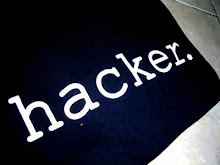Ah, leet, the language of the geek.To speak leet, you more or less need to un-learn proper english. the history of leet goes back to the early days of online message boards, or forums, where users can post messages to carry on a threaded conversation. In an attempt to "clean-up" the language that users would sometimes post, admins added a filtering system to the message board which would replace restricted words with some type of alternative. For example, the word "crap" might become "crud." it didn't take people long to figure out that you could get around this filter simply by altering the original word somehow, like changing "crap" to "c-r-a-p" or "krap" or "crrrap." it was soon obvious that these filtering systems could never possibly cover every variation because people would just keep inventing new ones, and so leet was born.
In the most generic explanation, leet is merely replacing certain letters of the alphabet with numbers that bear a slight resemblance. l becomes 1, e becomes 3, t becomes 7, and so on… leet becomes 1337.
In a not so generic explanation, leet is also a play on words. the word leet itself is actually a shorter, easier way of saying the word "elite" which the dictionary defines as: the best or most skilled members of a group. An odd thing about the internet is that when certain trends catch on, they seem to spread on a massive scale.
Leet is one of those trends that just wouldn't die; instead it grew and is still growing to this very day. Another popular trend to spread was aybabtu (all your base are belong to us) which is just one horribly translated line out of many from the video game "zero wing." then there was "star wars kid" where a home video of some kid swinging a pole around was uploaded to the internet and altered to make it look like he was swinging a light saber. Nobody knows why these things spread like plagues but they each share a unique taste in humor. Anyway, back on topic, every true geek knows leet.
Below i have provided a simple translation table to cover some common transitions and words. please bear in mind that the syntax can vary:
| A | B | C | D | E | F | G | H | I | J | K | L | M | N | O | P | Q | R | ||||||||
|---|---|---|---|---|---|---|---|---|---|---|---|---|---|---|---|---|---|---|---|---|---|---|---|---|---|
4 | 8 | ( | |) | 3 | |= | 6 | |-| | ! | _| | X | 1 | /\/\ | |\| | 0 | |* | 0_ | |2 |
| S | T | U | V | W | X | Y | Z |
|---|---|---|---|---|---|---|---|
5 | 7 | |_| | \/ | \/\/ | % | j | 2 |
|


Post a Comment